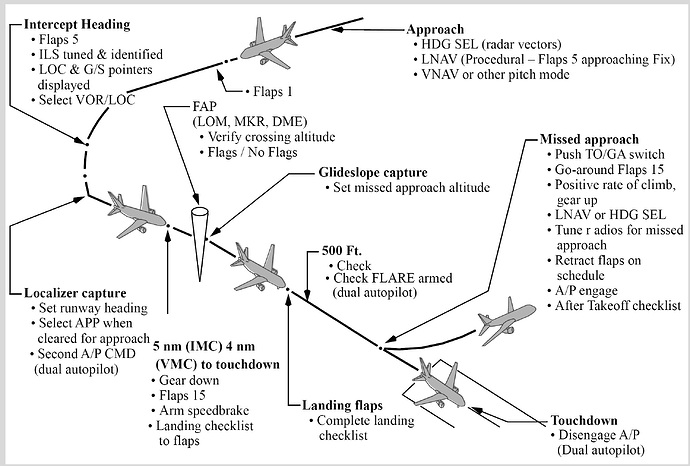We do low drag approaches so unless there’s something non-standard about the sequence or other associated threats like tailwind or steep glide slopes it would go something like this:
-220kts in the terminal area (around 15nm from touchdown)
-Flaps 1 mandatory by 10nm (Usually at around 11-13nm) to provide a good speed to intercept the localizer (200-180kts)
-Flaps 5 sometime between 11nm and 9nm. This is to be able to fly 180kts on intercept or by 8nm for sequence. On light loads Flaps 2 will be enough to maintain 180kts.
-Flaps 10 optionally if you need extra drag on the glide slope to keep the airspeed in line (The 737 is slippery and has a hard time slowing down on the glideslope). Speedbrake with flaps higher than F10 is allowed but not recommended.
-Gear down Flaps 15 at 4nm (VMC) or at 5nm (IMC) and read landing checklist down to flaps.
-Finish configuring and be stabilized at the landing gate (in our case 500ft in VMC or 1000ft in IMC).
For situational awareness we draw 2 rings in the FIX page around the landing runway (RW point).
-10nm for latest F1
-4nm (VMC) or 5nm (IMC) for Gear Down F15.
It works out very nicely. Of course we can deviate from this whenever required. If there’s slow traffic ahead of us (a320 or a turboprop) we’ll configure earlier. If there’s heavy tailwind on approach too. If the glideslope is steeper than the usual 3º we may even configure fully before GS capture (eg. Marseille). This happens on certain steep RNP approaches as well.
This is a diagram from the QRH. It contains some stuff for the dual channel approach (autoland) like disconnecting the autopilot on touchdown. Ignore that part if you want.
